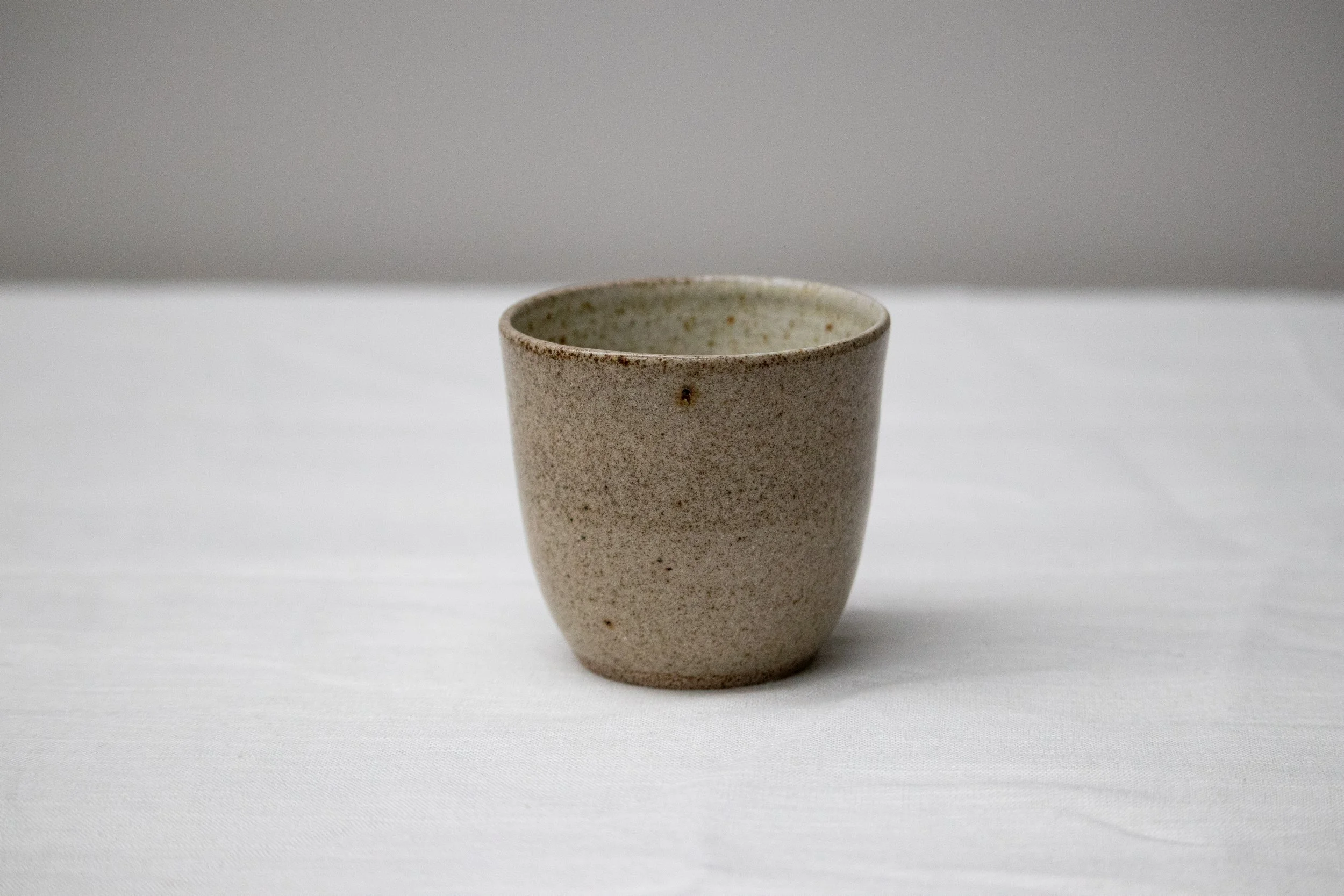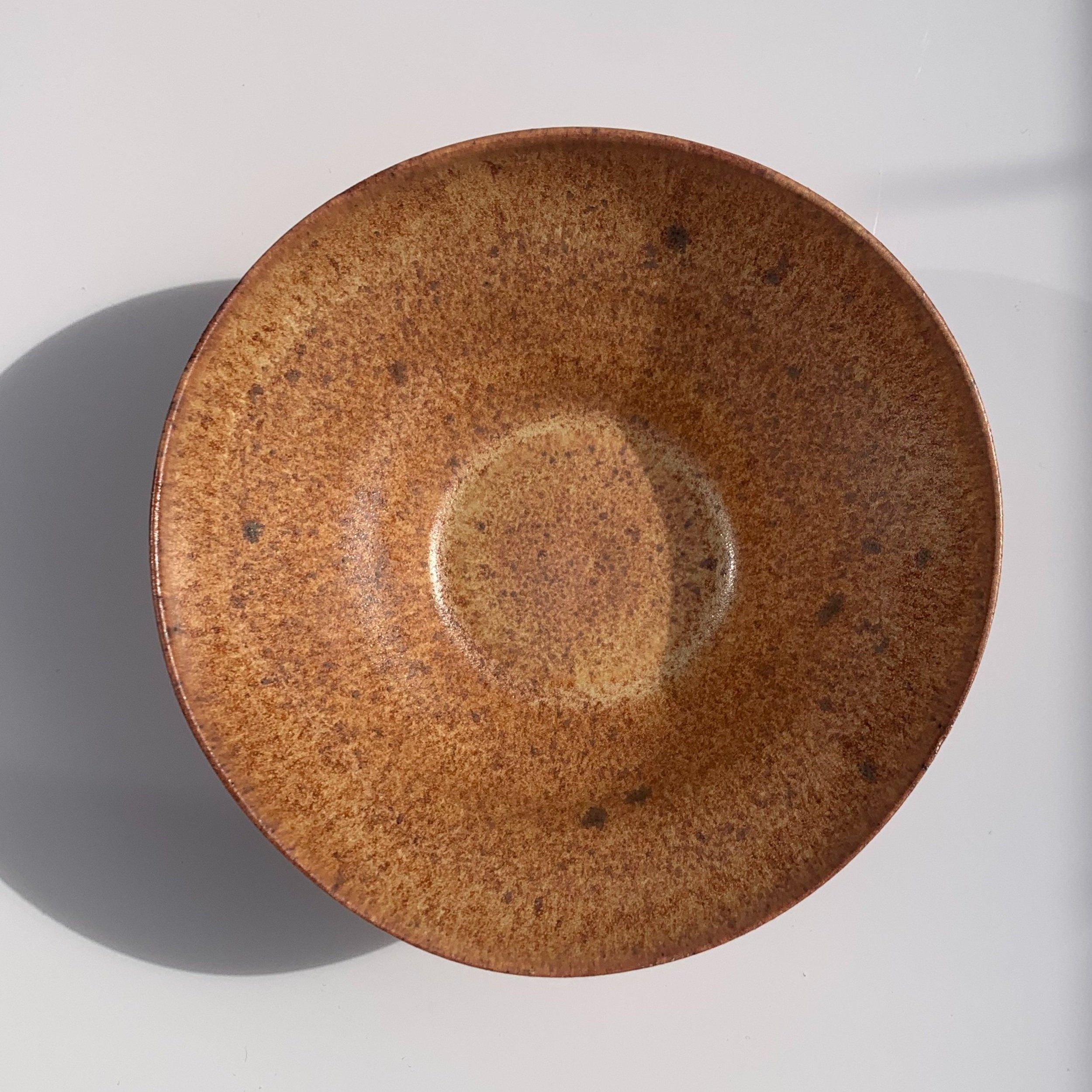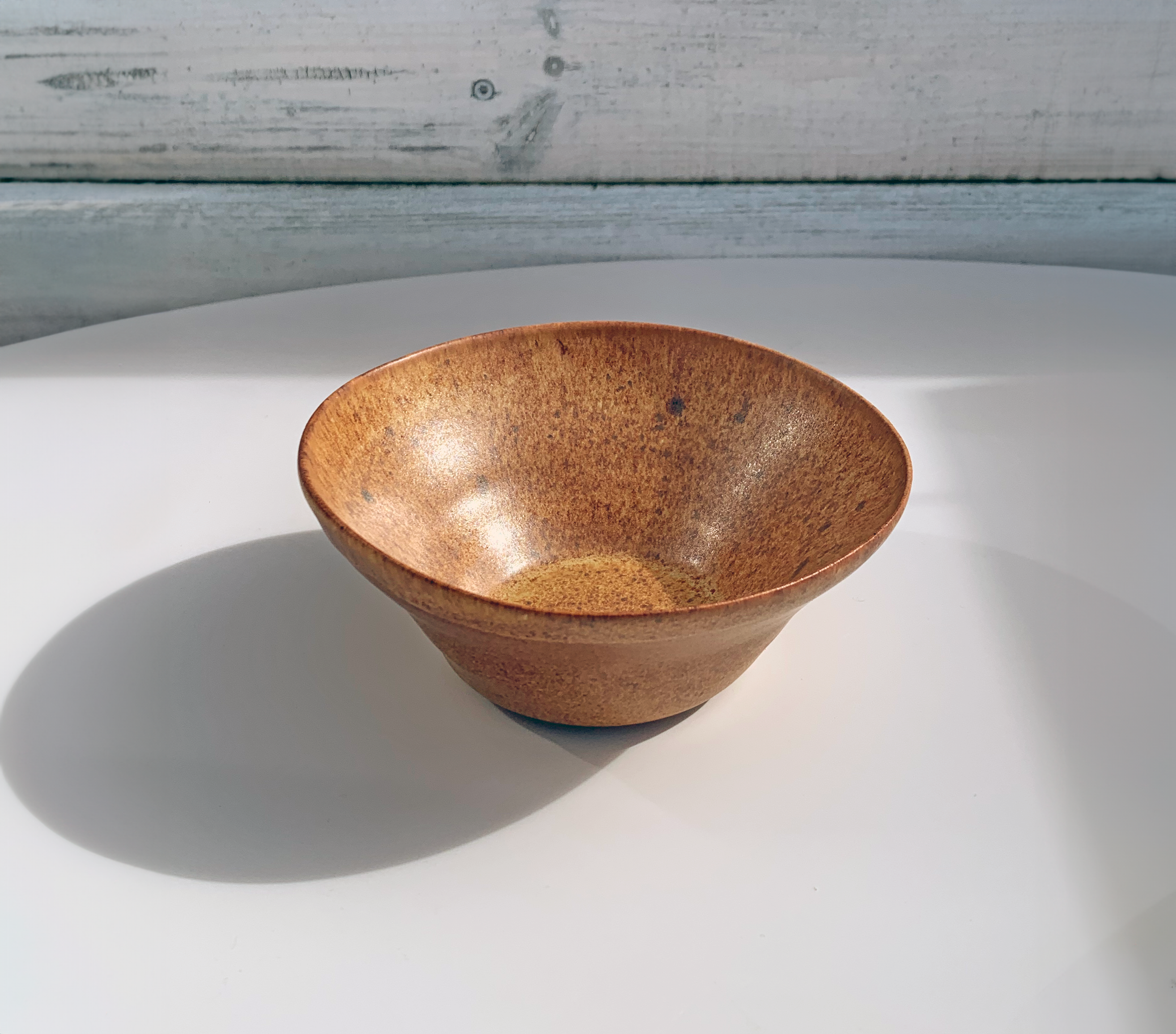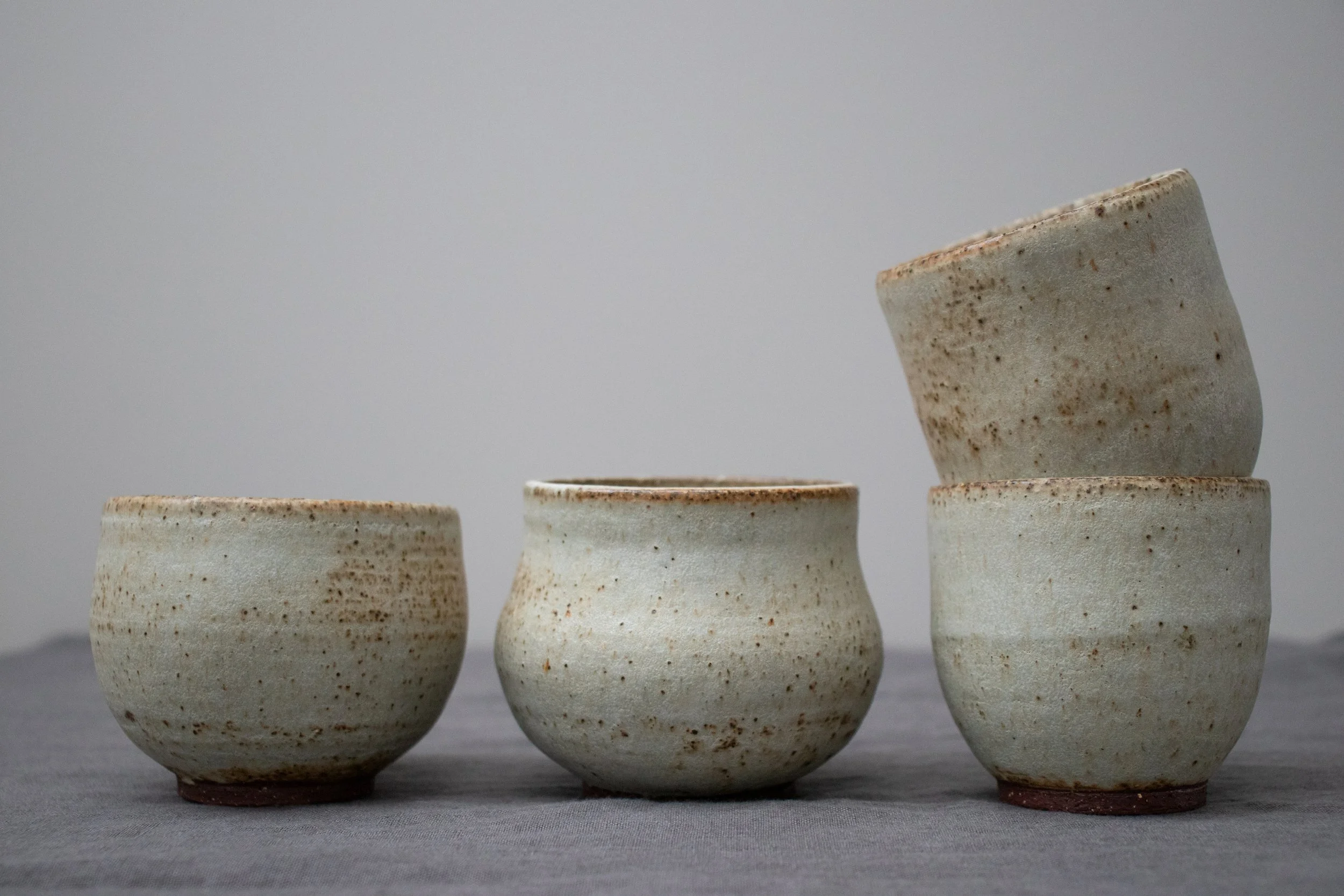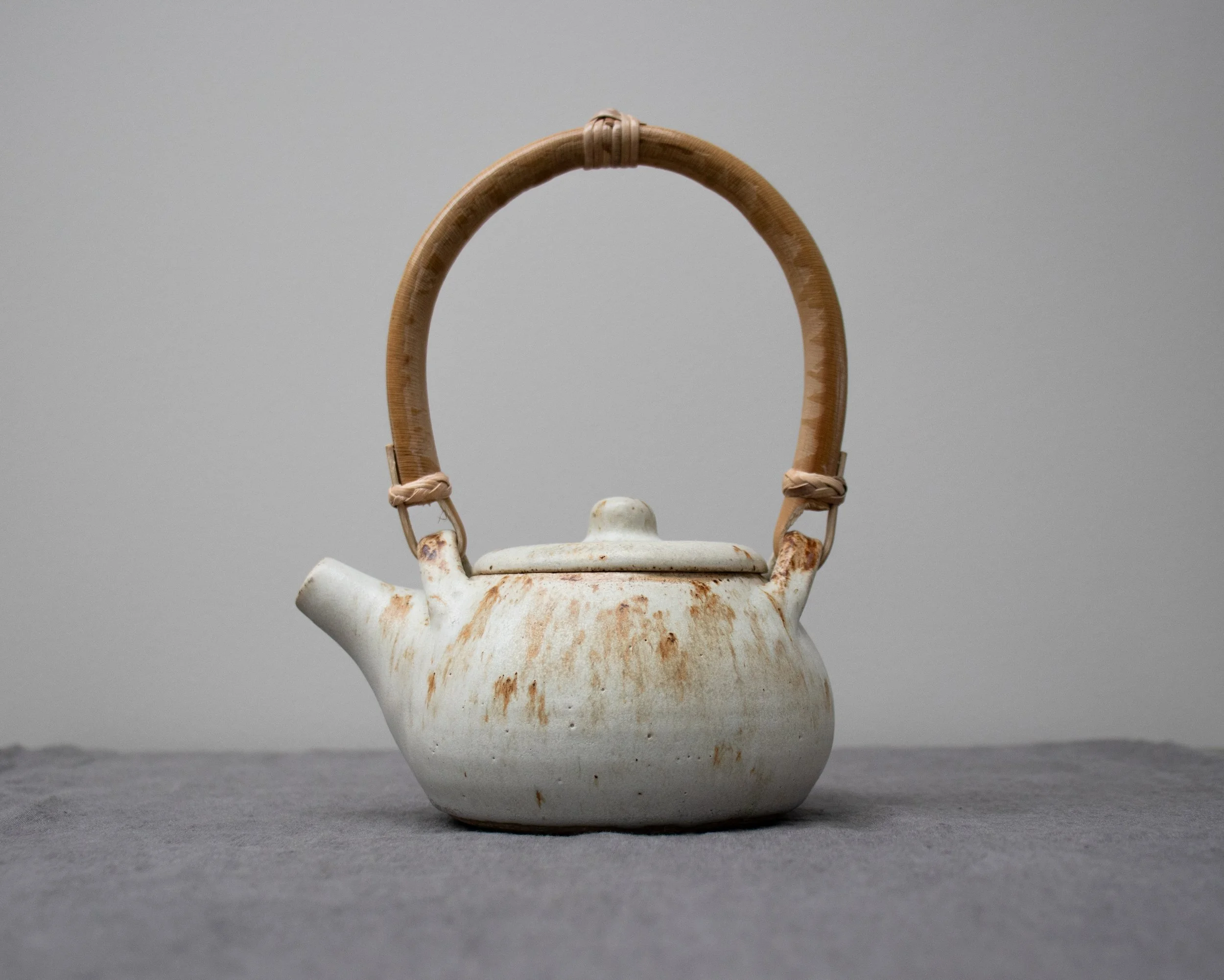Black silt - series
Black silt was added into the clay of these cups. The silt is rather fine as it’s composed of volcanic ash. I harvested it from a riverbank by Sólheimajökull, a glacier in the South of Iceland. I originally believed it to be clay but when it had dried it turned out to be mainly composed of silt. It’s fired twice, with a transparent glaze on the exterior and a white matte glaze on the interior in the second firing.
Seltún - series
The glaze on these cups was made with added geothermal clay from an active area called Seltún on the Reykjanes peninsula. I harvest the clay by a little stream away from the main delicate geothermal area. The clay is grey in colour, soft and medium in plasticity.
I work the clay through a few sieves to remove any impurities. I then pour it in with a simple white matte glaze. I don’t mix it but rather let it flow the way it wants to itself. This lets the clay and the glaze merge in different ways, creating patterns reminiscent of muddy glacial streams, coffee and milk or whatever comes to mind.
Fagradalsfjall - series
The glazes on these pieces have volcanic clay added to a white glaze. The clay seems to be iron rich, giving it a red colour. It was added into the glaze as a powder without sieving it, which resulted in the blotches and patterns on the surfaces.
Japanese inspired series
These chawan cups, bowls and small bud vases were made immediately after finishing a Japanese tableware course. I was inspired by the dark, coarse red clay, using it to throw off a hump creating different shapes and experimenting with carvings.
During the course I also learnt how to make a teapot, this was my first attempt. I added some Icelandic wild clay on top of the white glaze of it.




